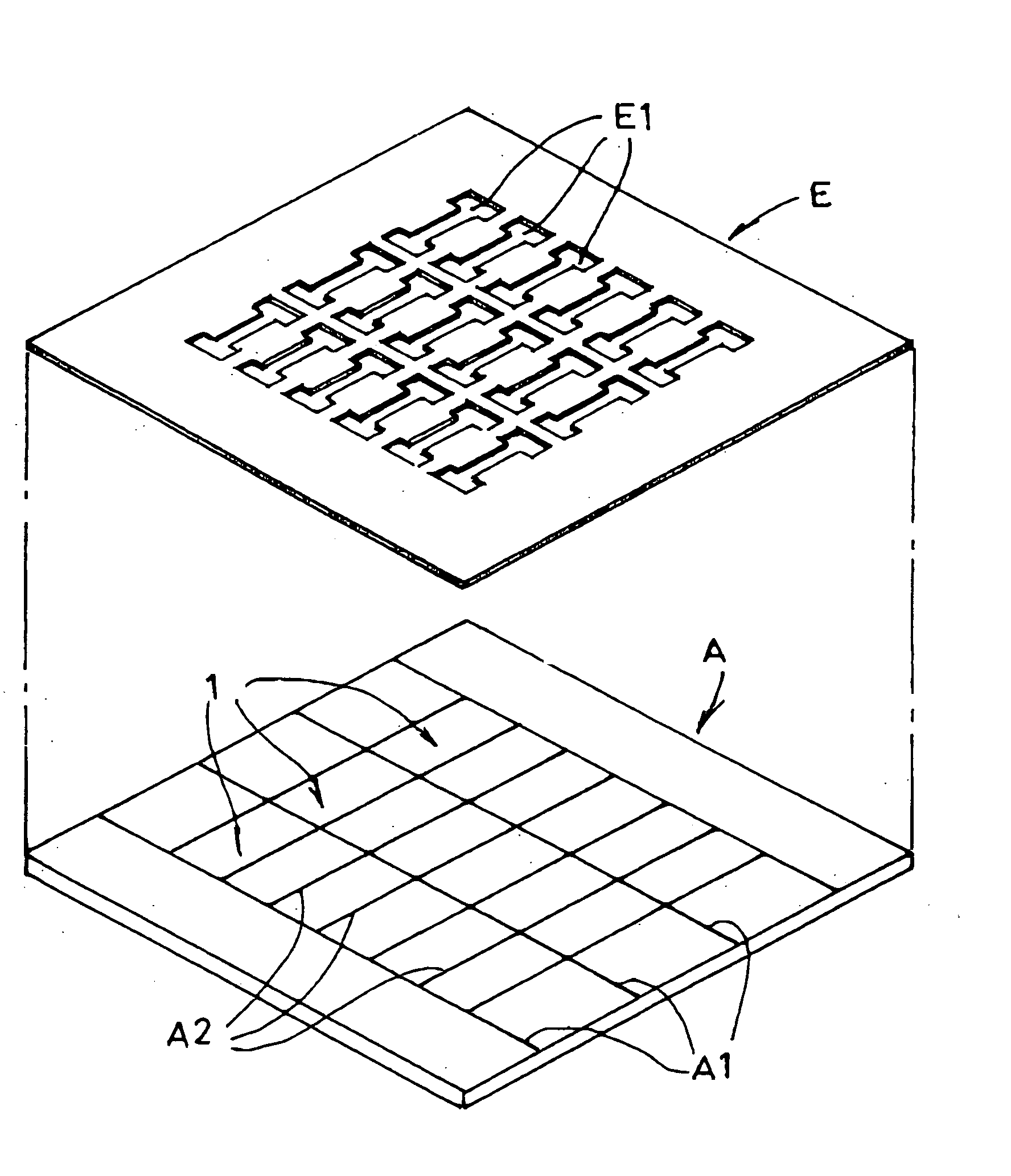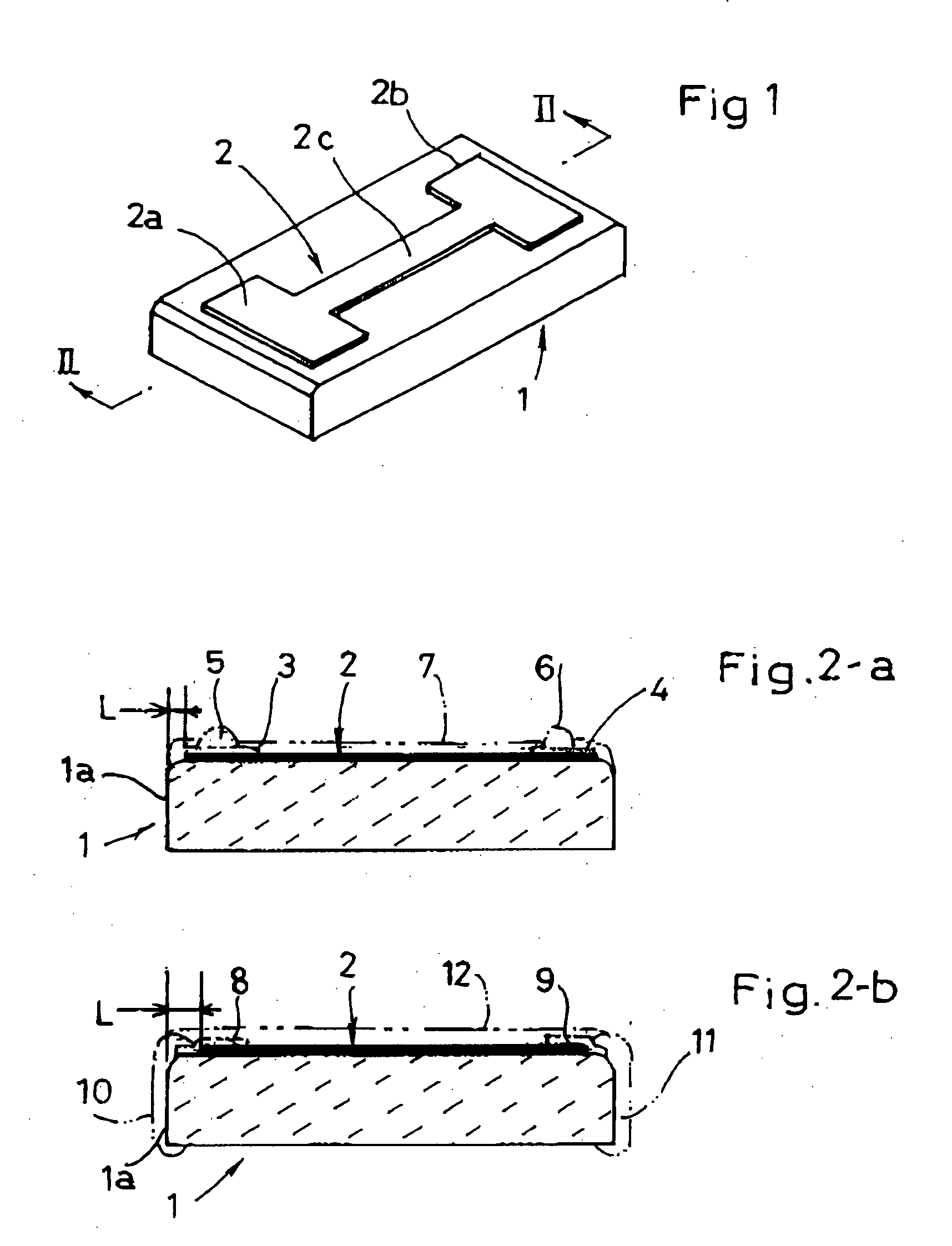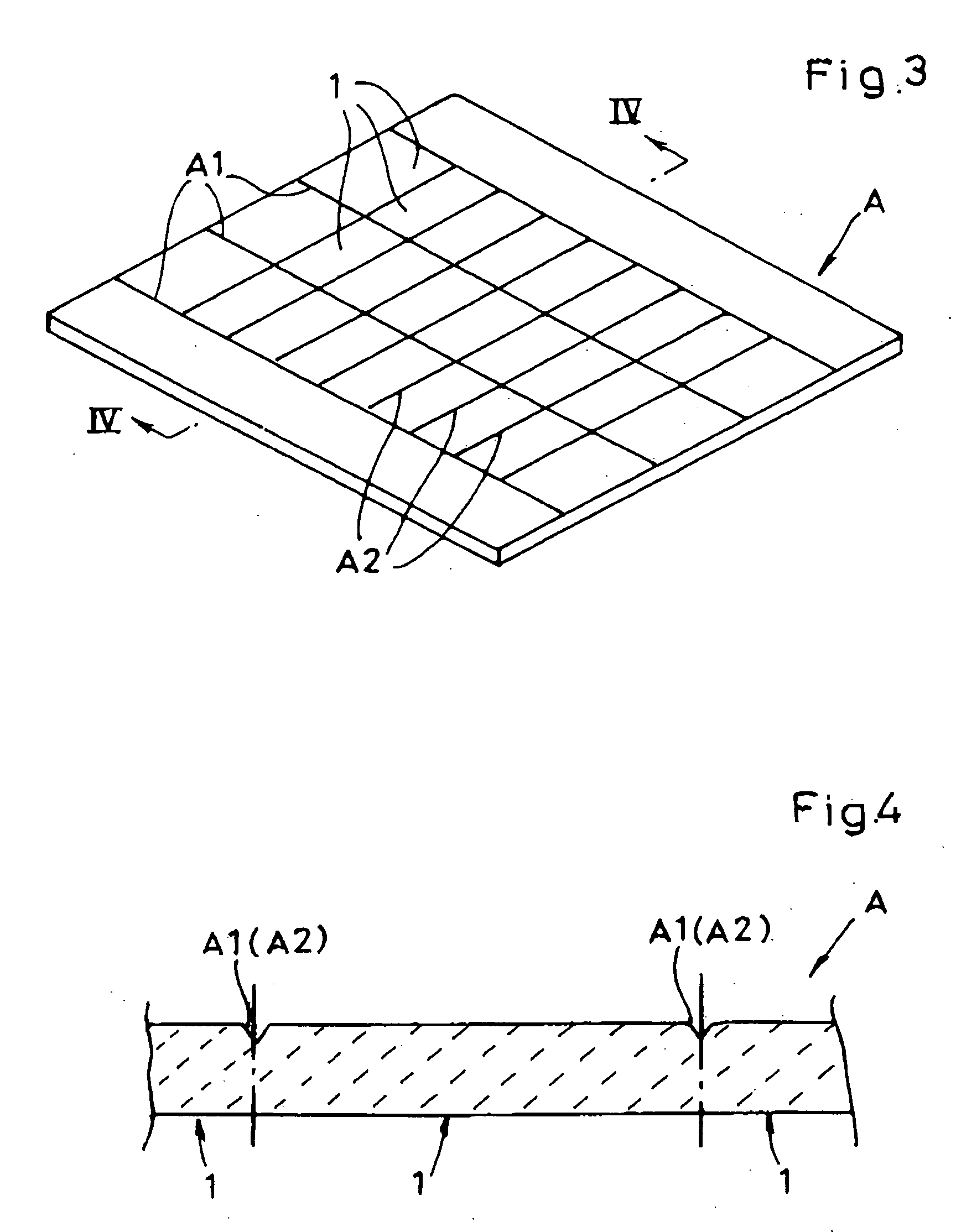Method of making thin-film chip resistor
- Summary
- Abstract
- Description
- Claims
- Application Information
AI Technical Summary
Benefits of technology
Problems solved by technology
Method used
Image
Examples
Embodiment Construction
[0062] Hereinafter, modes of embodying the present invention will be described with reference to the drawings.
[0063] Among the drawings, FIG. 10 through FIG. 13 show steps of a method according to a first mode of embodiment.
[0064] The method according to the first mode of embodiment includes, as does the conventional method, a step of preparing a material plate A (see FIG. 10) which has a surface provided with lengthwise breaking grooves A1 and crosswise breaking grooves A2 for the purpose of cutting the substrate into a plurality of chip substrates 1. The lengthwise breaking grooves A1 and the crosswise breaking grooves A2 can be formed simultaneously when the material plate A is manufactured. Alternatively, the material plate A may not be formed with the lengthwise breaking grooves A1 and the crosswise breaking grooves A2 at the time of manufacture, and the lengthwise breaking grooves A1 and the crosswise breaking grooves A2 may be formed later using laser beams for example, on ...
PUM
| Property | Measurement | Unit |
|---|---|---|
| Width | aaaaa | aaaaa |
| Non-magnetic | aaaaa | aaaaa |
Abstract
Description
Claims
Application Information
 Login to View More
Login to View More - R&D
- Intellectual Property
- Life Sciences
- Materials
- Tech Scout
- Unparalleled Data Quality
- Higher Quality Content
- 60% Fewer Hallucinations
Browse by: Latest US Patents, China's latest patents, Technical Efficacy Thesaurus, Application Domain, Technology Topic, Popular Technical Reports.
© 2025 PatSnap. All rights reserved.Legal|Privacy policy|Modern Slavery Act Transparency Statement|Sitemap|About US| Contact US: help@patsnap.com



